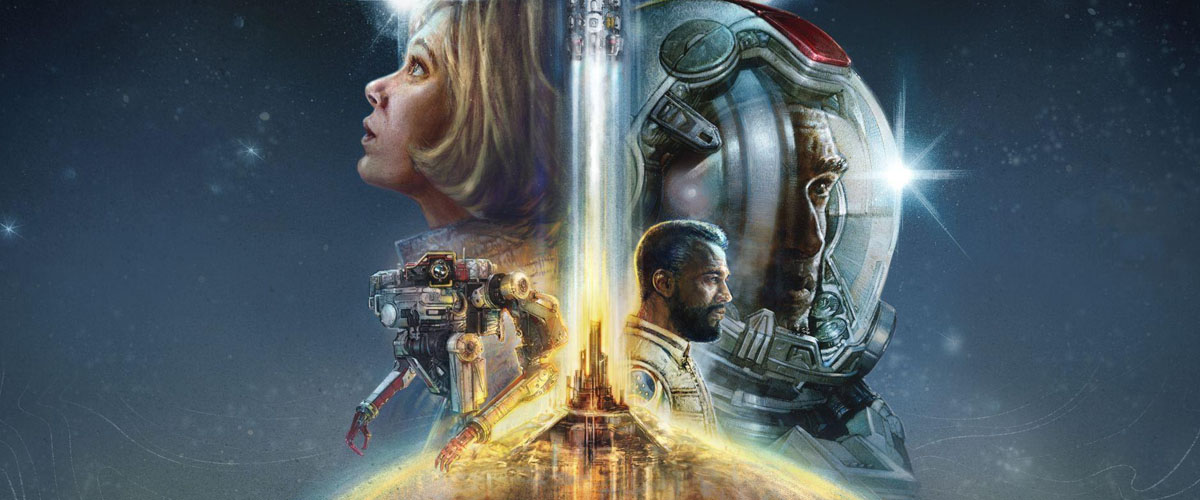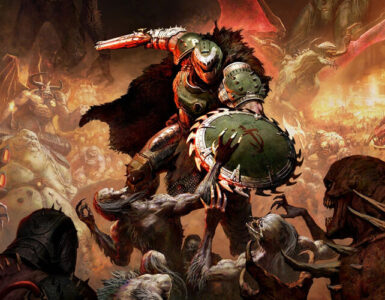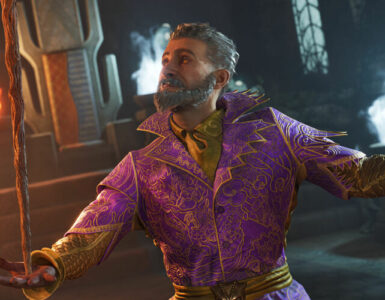Everything about Starfield is big. As Bethesda’s first original IP in 25 years, the sci-fi action role-playing game (RPG) has large shoes to fill. Then, there’s the matter of file size – it clocks in at around 125GB (or more, depending on the scale of the day one patch) on PC, which while isn’t as big as some AAA titles, can be a tight squeeze for those running low on storage space.

More notably, the in-game universe promises a massive, spacious playground of 1,000 planets, each with their own signs of life, points of interest, perils, and discoveries.
It’s an ambitious endeavour that calls for hours and hours of deep-vested exploration, a dream come true for open-world fans. There’s so much to do, so many people to meet, so much to discover, and so many sights to check out; in two words, it’s a lot. Unfortunately, there’s too little time to go through the whole experience, especially when you get distracted by every little thing along the way, but a humble 30-hour gameplay time yielded an enthralling, awe-inspiring, and enjoyable experience amid the stars – bugbears, slightly outdated flair, and all.
In the spirit of the Elder Scrolls series, Starfield adopts a straightforward narrative structure. Early looks at the galactic adventure have spawned comparisons to Skyrim, the fifth latest entry in the franchise, and it’s easy to see the parallels here. The latter follows a Dragonborn, who trains to become stronger, gain new abilities, join allegiances, defeat the final boss, and save the world. Bethesda’s shiny offering, in a similarly linear fashion, takes the player on a quest to collect rare artifacts throughout the galaxy and answer humanity’s greatest mystery.

The journey begins in a mining cave. While extracting various ores, the player comes across a peculiar crystal embedded in the vein, and is tasked with unearthing it. However, an intense burst of light, sound, and what seems to be visions rushes into their mind and knocks them unconscious. After coming to, it’s revealed that the alien entity, called an Artifact, holds a piece of the universe’s secrets, which will only reveal itself once all of the pieces, scattered across the vast universe, are unearthed. To do so, you join Constellation, the last group of space explorers committed to unlocking everything there’s to know about the galaxy.
And so marks the start of a long, dangerous road ahead, with no end destination in sight.
There’s hardly an issue, however. With Starfield, the journey is what matters, and the game presents an abundance of experiences in store. Some are dictated by the algorithm, but player choices also play an imperative role in determining the rest of the equation. While Constellation is a mandatory alliance, other factions are fair game, so you’ll be able to take your pick from the law-enforcing United Colonies, the corporate-run, tech-focused Ryujin Industries, the rogue, felonious Crimson Fleet, lawful mercenary group Freestar Collective (oh, the irony), and more.
Naturally, there will be some prerequisites to fulfill. Joining an alliance comes with various proofs of strength – usually in the nature of the organisation – that can range from passing a recruitment interview (Ryujin Industries) to resolving a hostage situation in a bank (Freestar Collective). Upon becoming a full-fledged member, the game opens up more interactive options, which act as a free pass out of sticky situations.
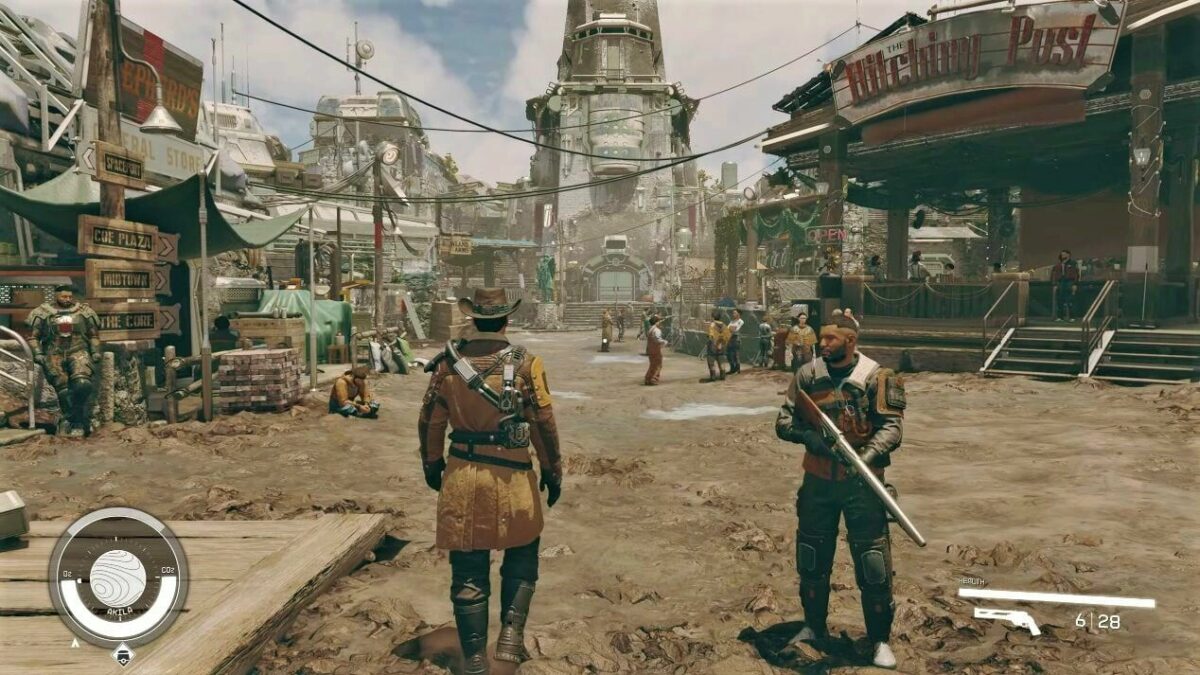
It charts familiar territory for those who have played Skyrim or Fallout 4, another of Bethesda’s heavyweight titles, and offers much leeway in making decisions. At the point of this review, enlisting in four factions doesn’t lead to any discernible consequences, but they will likely affect further storylines when loyalties are put to the test. The free reign works particularly well for inquisitive or adventurous individuals who like to stray off the path, or try out various actions to achieve different outcomes.
The latter way of doing things makes for an exciting affair, especially where breaking the law is concerned. Offering an outlet for a cheap thrill, stealing is an easy way to obtain resources, quick cash, crafting materials, and the like, but will land players in jail if they are caught and aren’t willing to pay the fine. Without spoiling much, that isn’t necessarily a bad thing, as it sets the stage for a double-agent storyline; such unexpected outings are one of the best payoffs of exploration and curiosity.
Again, if this evokes a sense of déjà vu, it’s because Starfield doesn’t hide its inheritance of elements from Bethesda’s previous games. Carry capacity makes a return here, as do the toggle between first and third-person POV, travelling companions, the ability to trade with them, romance options, and other familiar mechanics. The execution is quite the mixed bag, however – despite Starfield’s polished, shiny veneer (by Bethesda’s standards, mind you), these features lend an antiquated and stiff touch to a 2023 game, most notably in combat.
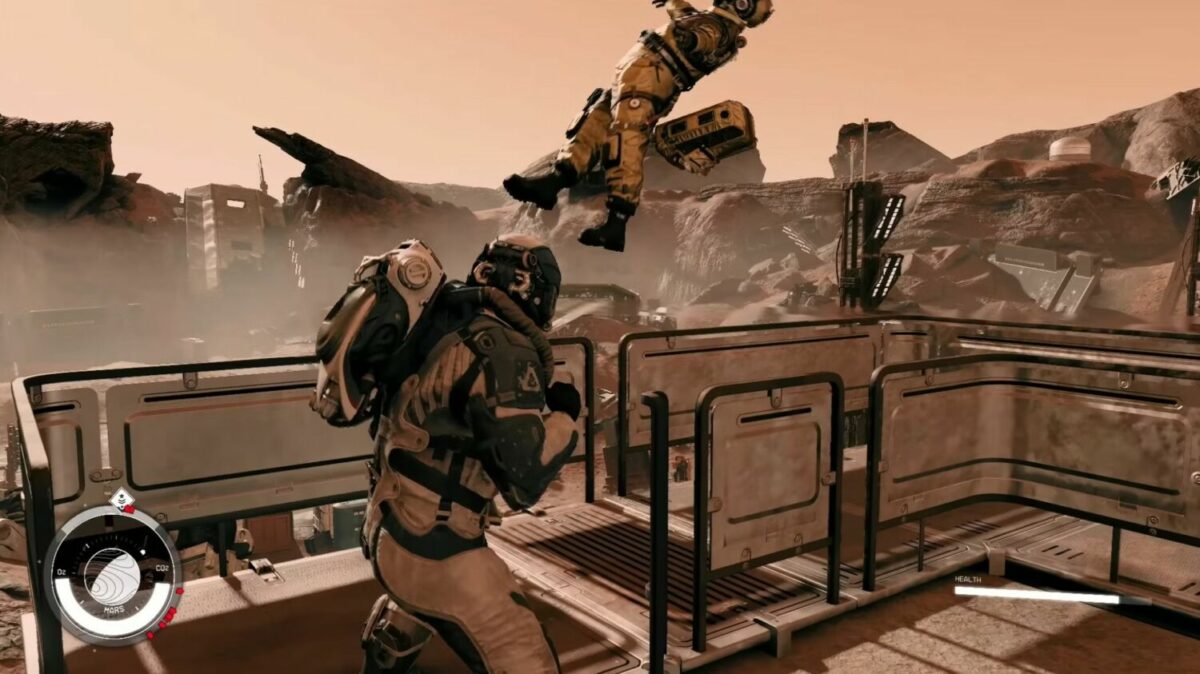
Sure, the sci-fi heavyweight is an RPG at heart. Yet, the inclusion of shooter elements calls for a certain kind of finesse and here, the controls are a tad stiffer than expected. Switching between the equipped items and weapons also feels rough, with the process going through more hoops than it needs to. Instead of a one-step affair, you’ll have to “favourite” an item from your inventory, then assign it to a key. Unarmed and melee combat is a little clumsy, too, while sliding, unlocked through the skill system, could be smoother – even if it does bring a more dynamic punch to the battlefield.
On that note, the skill system is one of the core ways in which Starfield exercises player choice. Spanning various categories, it allows individuals to freely allocate their points and mix both new and existing perks at will. The flexibility is welcome and makes it easier to strategise, especially with the amount of management needed to keep things running.
While it may be tempting to invest purely in, say, the combat department, doing so will deprive players of learning other useful skills. Persuasion, for instance, grants them a silver tongue and improves the odds of being successful in non-combat situations, such as negotiations or price haggling. Meanwhile, putting points in weightlifting increases carry capacity, allowing more items to be placed in the inventory.
Regardless of play style, individuals shouldn’t neglect seemingly unrelated or insignificant perks. Skills that fall under the Science or Food umbrella may not aid directly in firefights, but they unlock more recipes and research blueprints for modding weapons, spacesuits, and other equippables, leading to more powerful loadouts and greater healing. For those who fancy experimentation, this proves to be a liberating and fun lesson in mix-and-match.
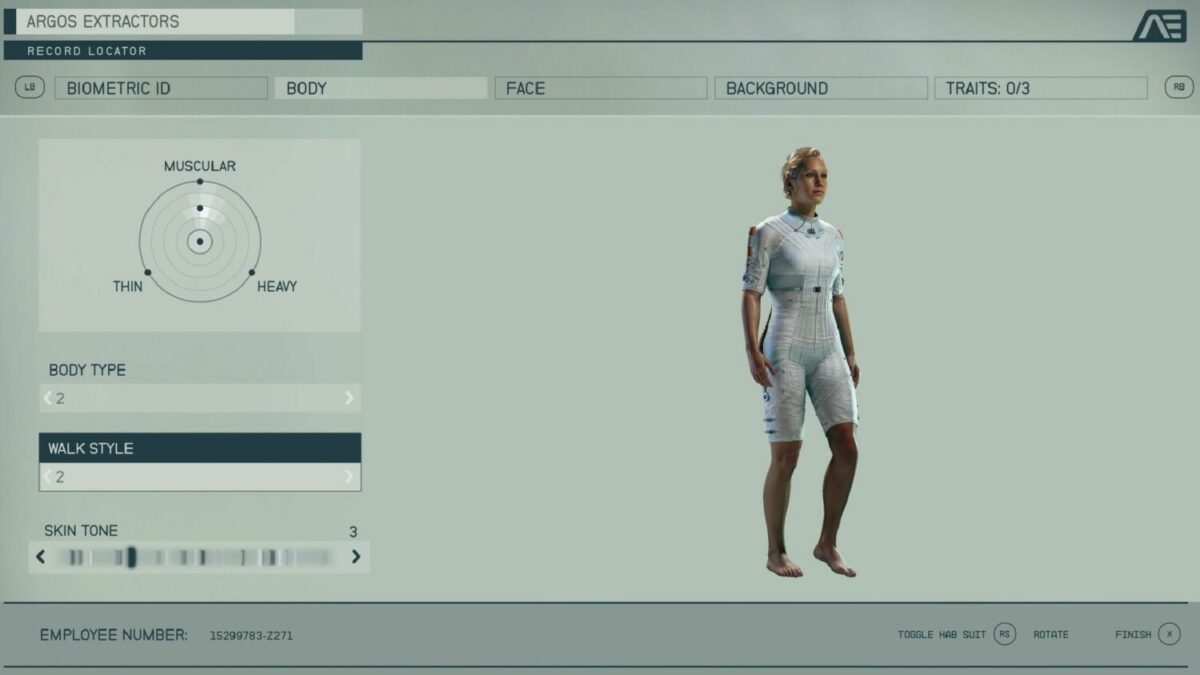
The skill tree isn’t the only form of customisation, though. In addition to character creation, which by the way, includes gait variations, Starfield also features an optional trait system similar to Dungeons & Dragons. Assigning these characteristics lets players craft a backstory for their characters, and also yields certain benefits and weaknesses – Extroverts, for example, deal more damage when a travelling companion is around, but will have to fork out more cash to recruit crew members.
Spaceship building and modification is the height of customisation. Apart from land combat, the intergalactic adventure promises a dogfighting spectacle as well, where one is able to attack both friendly and hostile space vessels with lasers, shooters, and gravity particle cannons. It’s an enthralling, engaging exchange of blows that requires some mechanical finesse that less seasoned players may lack, but once they’ve got it down, gunning down the enemy gives a rush of satisfaction like no other. Fortunately, the controls feel more furbished here, with maneuvering delivering a smoother experience.
There’s an added layer of complexity to consider, too. Cutting through the fighting action is the need to supply, or re-distribute, points to different arms of the spaceships: Shields, Missile, Gravity Particle Cannon, Engine, and Gravity Jump (labelled as GravJump). The more stacks their status bars have, the more power they boast, but there’s a catch. With limited stacks, players won’t be able to crank every arm to the maximum, and it’s a delicate balancing act that will take some time to master. When the shield depletes and the hull gets destroyed, it’s game over – unless you’re referring to the enemies, in which case their ships can be looted.
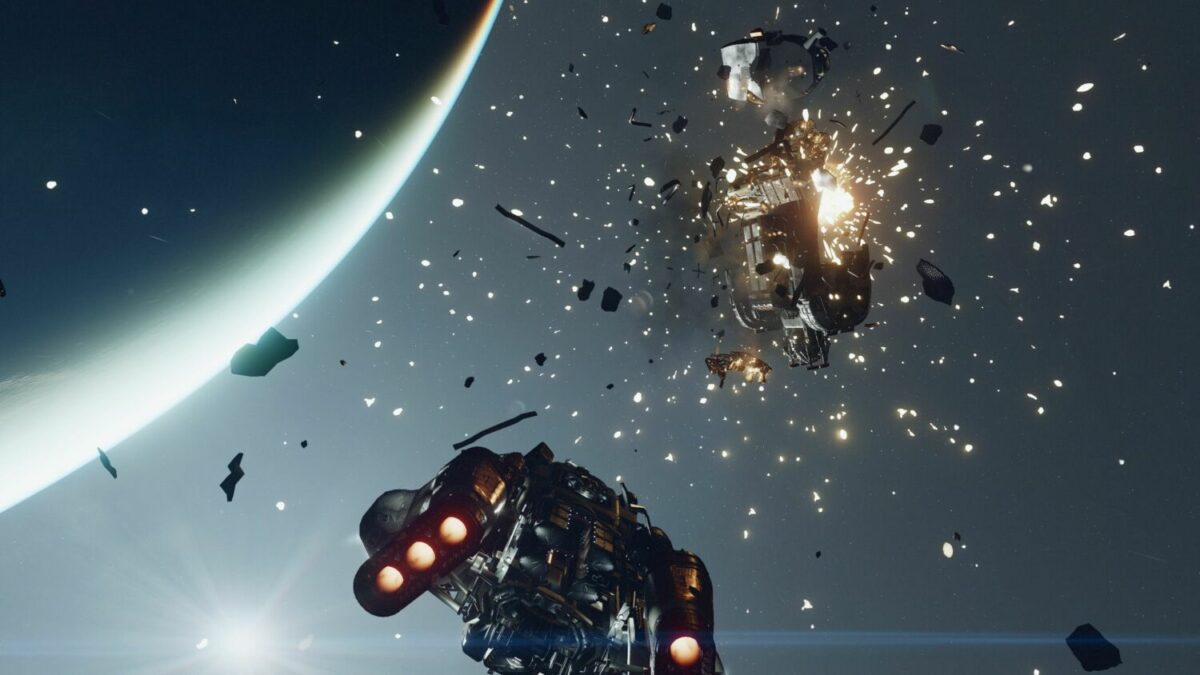
There are ways to work around defeat, of course. The first is to activate Gravity Jump and flee from the battle before the ship takes the last blow to land on a nearby planet, while the second takes the form of ship upgrades. Damaged spaceships can be repaired or improved, but the real challenge comes with customisation, as players are able to personalise everything, right down to the smallest of details, such as decals. The sheer detail and vast offerings are as impressive as they are daunting, especially for newcomers.
Where there’s choice, consequences follow. As expected from a Bethesda title, Starfield often reminds players that there’s a price to pay for every action. Travelling companions will make their approval or disappointment known, whereas the string of decisions made in a questline influences the outcome. Case in point: an AI encountered in a side endeavour explicitly states that it’s a human and doesn’t want to be terminated. However, a group of personnel asks you to do so, and the demand is executed, it goes rogue and blows up the spaceship. Oof.
Not that players have to worry about that. With more than 1,000 planets laying in wait, there’s certainly no shortage of quests and activities to go around. In fact, they don’t always have to interact with NPCs to trigger one – simply eavesdropping on a conversation, or crossing paths with a group in the middle of a discussion can also grow the mission list. Like other RPGs, some may end up being insignificant, such as fetch quests, but the more fleshed out ones can prove even more interesting than the main questline.
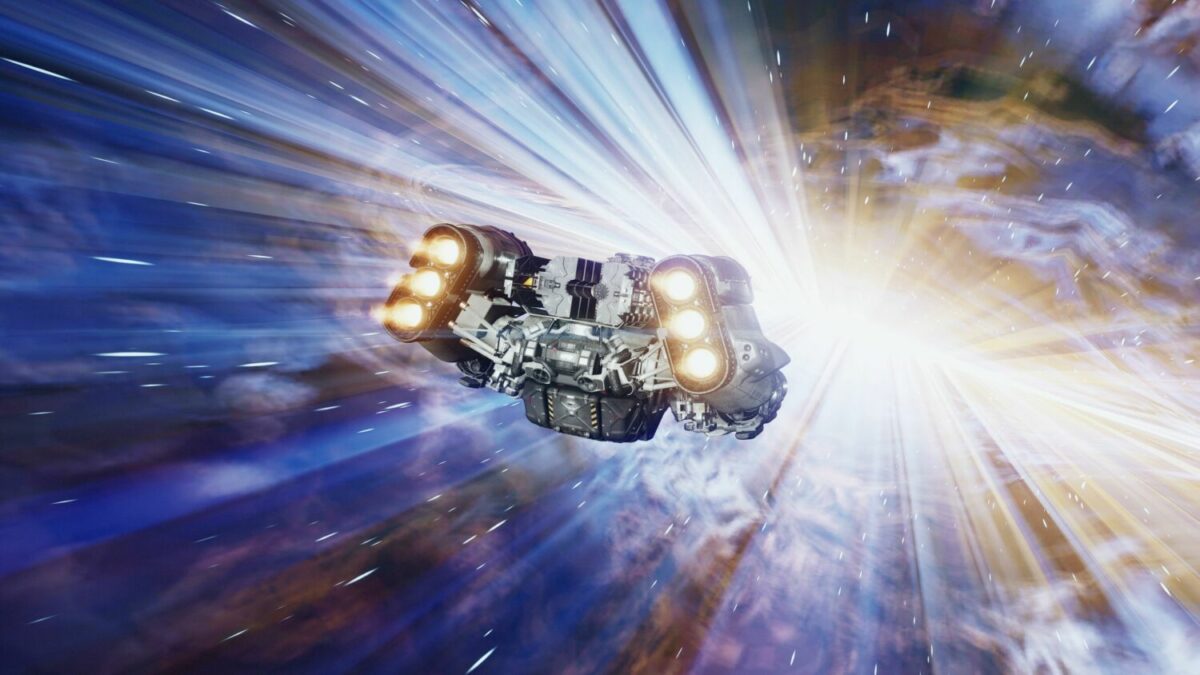
In Starfield, hopping between planets is made easier with Gravity Jump and quick travel, unlocked after visiting a location for the first time. As the game features a wide range of galaxies, climates, and terrains, players will have the chance to explore different locales, environmental design, and flora and fauna. Done right, these worlds can be a breathtaking sight to behold, a captivating beauty in the great attention to detail and atmospheric wonders. Other times, the vast landscapes exude a bloated quality, with no signs of life detected for miles.
To be fair, Bethesda’s latest leaves it to players to spruce up a location by building colonies, research plants, or even a living space. Doing so will introduce yet another element of management alongside some perks, starting from self-producing resources, which are required for crafting. Crew members can also be assigned to these outposts, where they harvest materials and maintain operational processes. While all of them are able to assist, it’s best to send individuals with expertise in the field for better yield and performance.
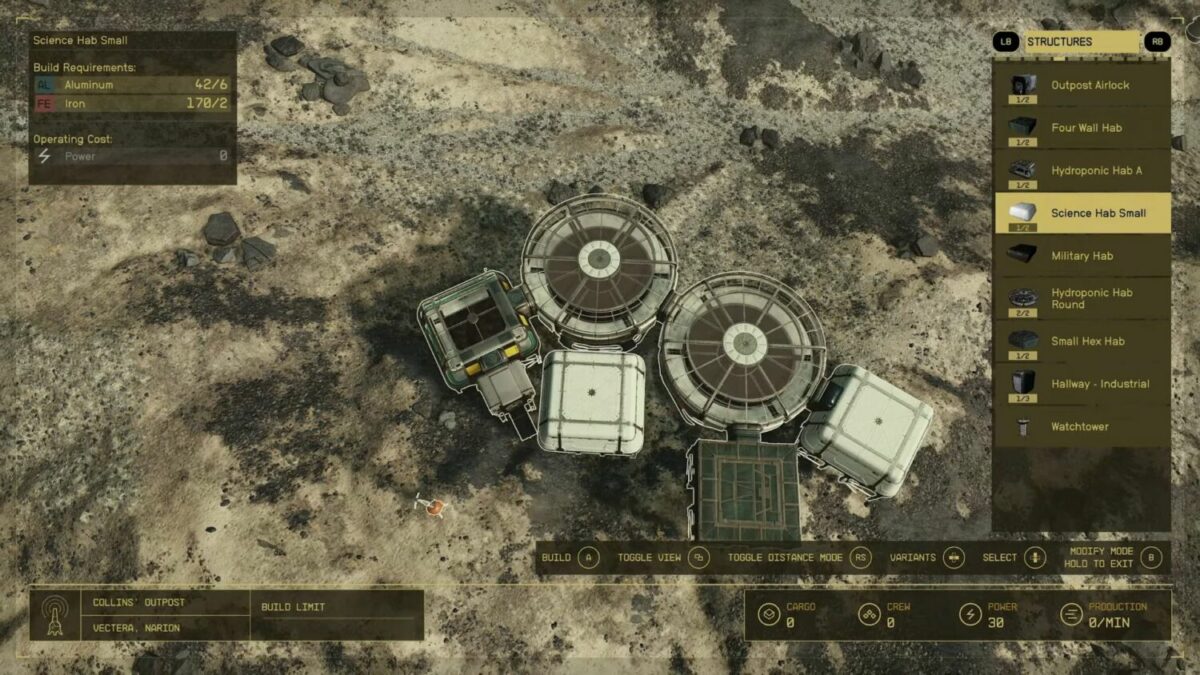
Admittedly, the colony building experience won’t be everyone’s cup of tea. However, it serves as a nice reprieve from the constant action, from fighting to completing quests, and saves individuals from having to manually farm and gather resources everytime. Just one more thing to note – going into building mode doesn’t stop the flow of time, so you can still be encroached by wildlife while shifting things around. Even if it’s an occasional event, slight annoyance still rears its head every now and then.

On the Samsung Neo QLED QN90C TV, the livelier planets enjoy rich, colours with DLSS and full ray tracing turned on. Bustling cities are conveyed with sharp detail, while the spawling expanse of space is shown through deep blacks and smooth navigation. The polish carries over to dogfights as well, where every careen, sudden turn, and missile launch can be easily followed and enjoyed in the thick of battle.
10 years in the making, Starfield is shaping up to be a bright glow in a sea of stars. More than just Skyrim in space, it offers some genuine enjoyment in the face of both familiar and novel elements, namely with exploration and player choice. Bethesda’s latest isn’t flawless, and that’s perfectly fine (some may even find its faults charming), because it has a little something for everyone. Free-roaming fun? Check. The thrills of battle? Double check. Customisation? Triple check – the list goes on.
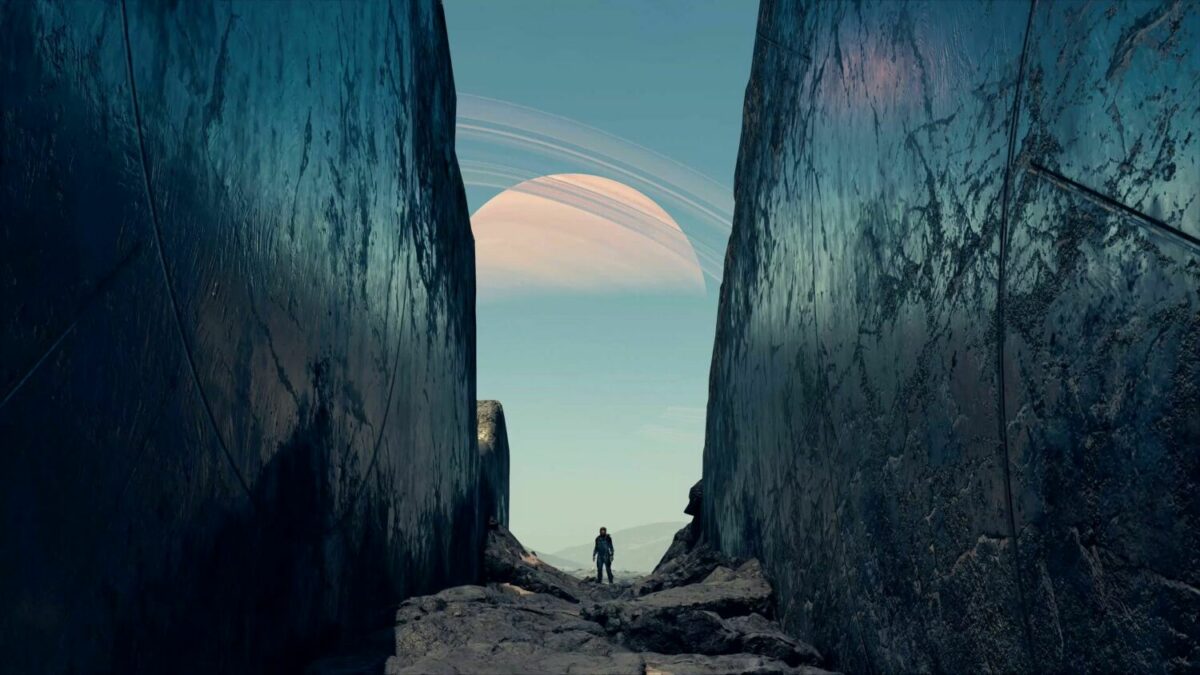
Starfield will be available on Xbox Series X|S and PC on 6 September, with Day One Access on Xbox Game Pass.
GEEK REVIEW SCORE
Summary
One small step for the RPG community, one giant leap for Bethesda. The Starfield experience is a special something that doesn’t come across as entirely novel, but makes up for all the years of waiting with its bold ambition to dream, explore, and shape your own journey.
Overall
8.5/10-
Gameplay - 8/10
8/10
-
Story - 8.5/10
8.5/10
-
Presentation - 9.5/10
9.5/10
-
Value - 8/10
8/10

